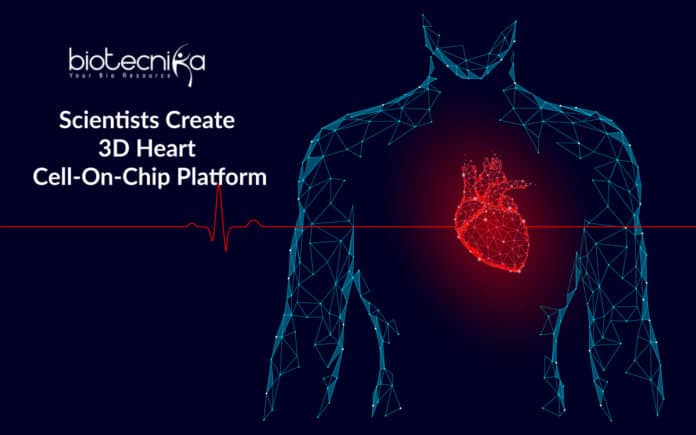Scientists create 3D heart cell-on-chip platform
Self-rolling sensors take heart cell readings in 3D
WASHINGTON, Aug. 25: Researchers in the US and Singapore have developed an organ-on-chip platform which uses bio-electrical sensors to measure the electrical properties of heart cells in 3D.
The research study published in the latest edition of Science Advances showed that 3D, self-rolling biosensor arrays were made to coil up over heart cell spheroid tissues to form an “organ-on-e-chip,” or say 3D heart cell-on-chip platform that enables the scientists to study how these cells communicate with each other in a multicellular system such as the heart.
The 3D heart cell-on-chip platform can help develop and assess the efficacy of various drugs for disease treatment. This may allow researchers to screen for drugs as well as the toxins directly on a human-like tissue, instead of testing those on animal tissue.
Formerly, scientists used cells and cultures on 2D surfaces, such as culture dishes. But now, they have developed a way to shrink-wrap sensors around heart cells to extract electrophysiological information from heart tissue.
The scientists from Carnegie Mellon University and Nanyang Technological University pinned an array of sensors made of either graphene sensors or metallic electrodes to the chip’s surface then etched off a bottom layer of germanium.
Once the layer is removed, the biosensor array is released from its hold and it coils up from the surface in a barrel-shaped structure, according to the study.
The Scientists then coiled the platform over elongated organoids or cardiac spheroids made of heart cells, that are about the width of two to three human hairs.
This technique could automatically adjust the level of the delicate touch between the sensors and the tissue so that high-quality electric signals can be collected accurately despite external pressure.
Anna Kalmykov, the paper’s lead author, at Carnegie Mellon University said, that this platform could be used to do more studies and research into cardiac tissue regeneration as well as maturation that potentially can be used to treat the damaged tissue after a heart attack.






























